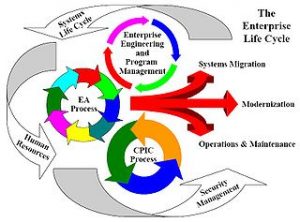How to Calculate Depreciation

Regardless of the depreciation method used, the total amount of depreciation expense over the useful life of an asset cannot exceed the asset’s depreciable cost (asset’s cost minus its estimated salvage value). To illustrate an Accumulated Depreciation account, assume that a retailer purchased a delivery truck for $70,000 and it was recorded with a debit of $70,000 in the asset account Truck. Each year when the truck is depreciated by $10,000, the accounting entry will credit Accumulated Depreciation – Truck (instead of crediting the asset account Truck).
Depreciation and Taxation
Titus, the plant supervisor, determined the technical feasibility test of the bottling machine. Find out the depreciated expense for each year using the straight-line method. Income statement accounts are referred to as temporary accounts since their account balances are closed to a stockholders’ equity account after the annual income statement is prepared. Note that while salvage value is not used in how long should you keep tax records declining balance calculations, once an asset has been depreciated down to its salvage value, it cannot be further depreciated. The IRS publishes depreciation schedules indicating the total number of years an asset can be depreciated for tax purposes, depending on the type of asset. This formula is best for small businesses seeking a simple method of depreciation.
How much depreciation can I claim?
If the useful life is short, then calculated Depreciation will also be less in the early accounting periods. This means that there will be a large difference between tax expense and taxable income at the beginning of the accounting period. Because large losses are realized early, the tax benefit will be spread over a longer period. The most common way of calculating depreciating expense is the straight-line method. The difference between the fixed asset cost and its salvage value is divided by the useful life of that asset in years to get the depreciating value for each year.

Suppose that the company is using the straight-line schedule originally described. After three years, the company changes the expected useful life to what is a setup charge a total of 15 years but keeps the salvage value the same. With a book value of $73,000 at this point (one does not go back and « correct » the depreciation applied so far when changing assumptions), there is $63,000 left to depreciate. This will be done over the next 12 years (15-year lifetime minus three years already). Companies depreciate to allocate the cost of a tangible asset, over its useful life.
Methods of Depreciation
- Management that routinely keeps book value consistently lower than market value might also be doing other types of manipulation over time to massage the company’s results.
- Alternatively, you wouldn’t depreciate inexpensive items that are only useful in the short term.
- The earlier you can start planning for that purchase — perhaps by setting aside cash each month in a business savings account — the easier it will be to replace the equipment when the time comes.
- Sum of the years’ digits depreciation is another accelerated depreciation method.
- Companies depreciate to account for this value throughout the useful life of that asset.
Carrying value is the net of the asset account and the accumulated depreciation. Salvage value is the carrying value that remains on the balance sheet after which all depreciation is accounted for until the asset is disposed of or sold. Salvage value is what a company expects to receive in exchange for the asset at the end of its useful life. Accumulated depreciation is a contra-asset account on a balance sheet; its natural balance is a credit that reduces the overall value of a company’s assets. Accumulated depreciation on any given asset is its cumulative depreciation up to a single point in its life.
Double declining balance depreciation is an accelerated depreciation method. Businesses use accelerated methods when dealing with assets that are more productive in their early years. The double declining balance method is often used for equipment when the units of production method is not used. The declining balance method is a type of accelerated depreciation used to write off depreciation costs earlier in an asset’s life and to minimize tax exposure.
Depreciation ends when the asset reaches the end of its usable life or when you sell it. In some cases, an asset may decline in value at a steady rate, while others may decline more rapidly in years where they see heavier use. Salvage value can be based on past history of similar assets, a professional appraisal, or a percentage estimate of the value of the asset at the end of its useful life. Buildings and structures can be depreciated, but land is not eligible for depreciation. Suppose that trailer technology has changed significantly over the past three years and the company wants to upgrade its trailer to the improved version while selling its old one.
Also, depreciation expense is merely a book entry and represents a « non-cash » expense. Depreciation is the reduction in the value of a fixed asset due to usage, wear and tear, the passage of time, or obsolescence. For the same example, what will be the depreciating expense if the company charges 20% per annum? To illustrate the cost of an asset, assume that a company paid $10,000 to purchase used equipment located 200 miles away. how to void a check for direct deposit Finally, the company paid $5,000 to get the equipment in working condition. The company will record the equipment in its general ledger account Equipment at the cost of $17,000.
